| |
ASM/ICAAC: Racial Characteristics of FTC/TDF for
Pre-exposure Prophylaxis (PrEP) Users in the US
|
| |
| |
"A total of 49,158 unique individuals have started FTC/TDF for PrEP from 2012-2015"
Reported by Jules Levin
ASM Microbe 2016 / ICAAC 2016
Boston, MA; June 16-20, 2016
Bush, Staci; Magnuson, David; Rawlings, M. Keith; Hawkins, Trevor; McCallister, Scott; Mera Giler, Robertino
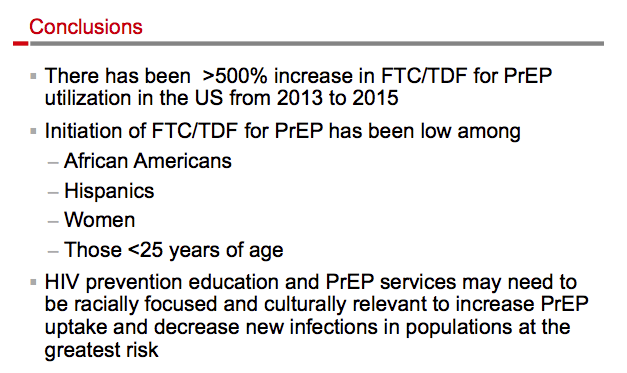
Program Abstract
Background: Blacks account for an estimated 44% of all new HIV infections in the US, with Black women accounting for 29% of that number at a rate of 20 times that of White women. This study explores the racial characteristics of US pre-exposure prophylaxis (PrEP) users since the approval of FTC/TDF (Truvada®) for PrEP in 2012.
Methods: National electronic patient level data was collected from 82% of all US retail pharmacies that dispensed FTC/TDF between January 1, 2012 and September 30, 2015. A previously described algorithm identified use of FTC/TDF for PrEP by excluding FTC/TDF use for HIV treatment, post-exposure prophylaxis, and off-label treatment of chronic hepatitis B. De-identified patient-level data including prescription refill data, medical claims, and patient demographics were analyzed via logistic regression. Data was projected to all retail pharmacies.
Results: A total of 49,158 unique individuals have started FTC/TDF for PrEP from 2012-2015. Data on race was available for 43.7% of subjects. Blacks represented 10.1%, with Whites, Hispanics and Asians being 74.5%, 11.7% and 3.7% respectively. The proportion of Blacks who started PrEP dropped from 12.3% in 2012 to 9.7% in 2015. Women compromised 20.7% of those who initiated PrEP overall, but the percent of female new starts dropped, from 41.6% in Q3 2013 to 13.8% in Q3 2015 and Black women were over four times less likely to have initiated PrEP, compared to White women.

Conclusion: The population of PrEP users in the US is significantly increasing, but is not proportionally aligned with the racial demographics of new infections. New starts of FTC/TDF for PrEP increased among Whites in 2015 while Black uptake lagged. Male uptake increased while the female uptake remained flat and disproportionately lower in Black women. HIV prevention messaging and services need to be racially focused to decrease new infections in populations with the most severe burden of HIV.
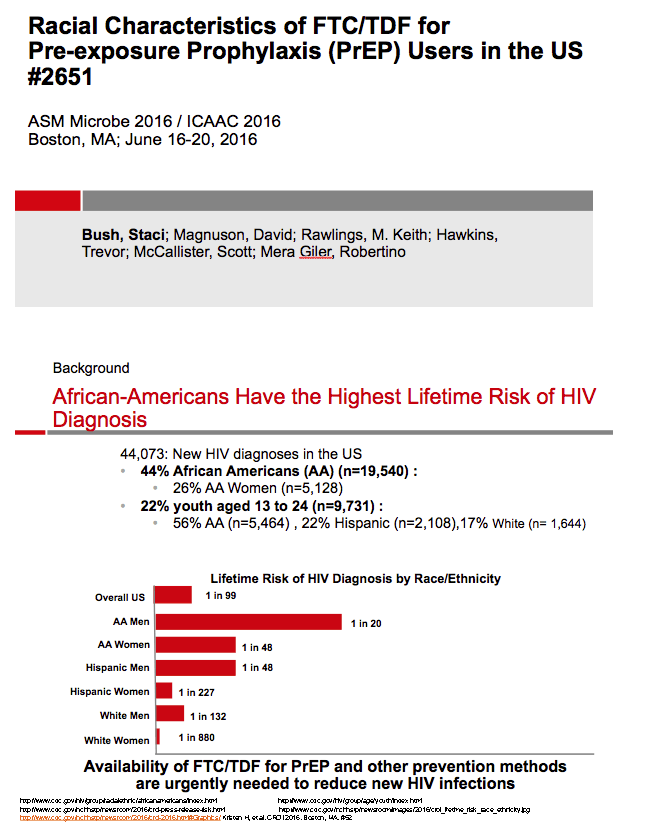
http://www.cdc.gov/hiv/group/racialethnic/africanamericans/index.html
http://www.cdc.gov/hiv/group/age/youth/index.html
http://www.cdc.gov/nchhstp/newsroom/2016/croi-press-release-risk.html
http://www.cdc.gov/nchhstp/newsroom/images/2016/croi_lifetime_risk_race_ethnicity.jpg
http://www.cdc.gov/nchhstp/newsroom/2016/croi-2016.html
#Graphics/ Kristen H, et al. CROI 2016. Boston, MA. #52

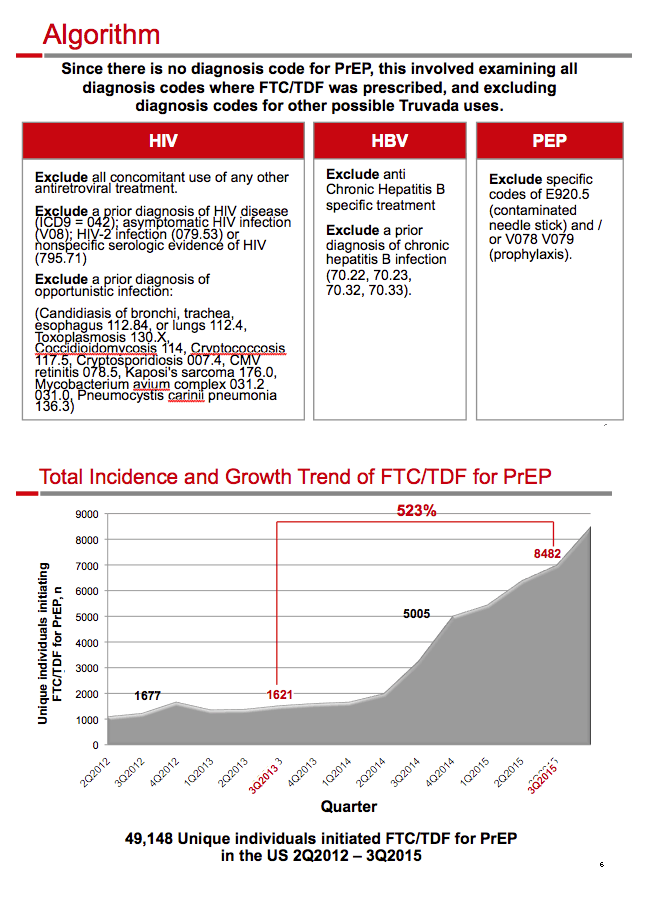
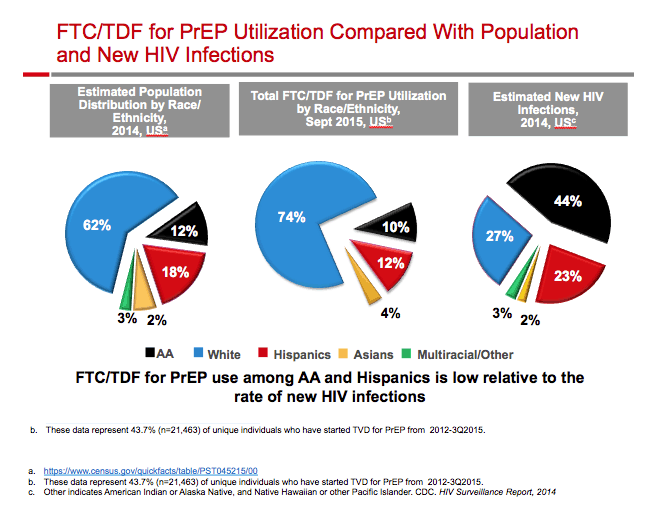
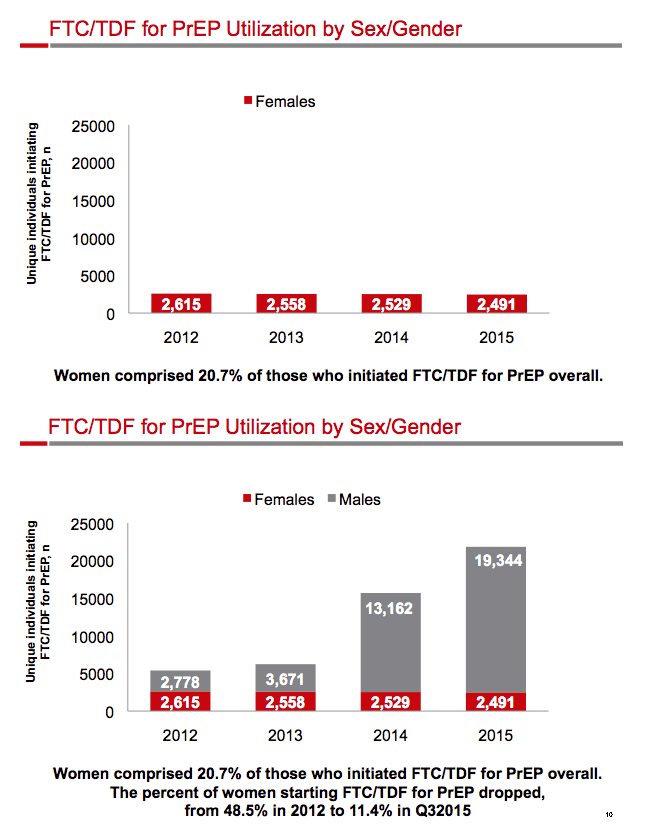
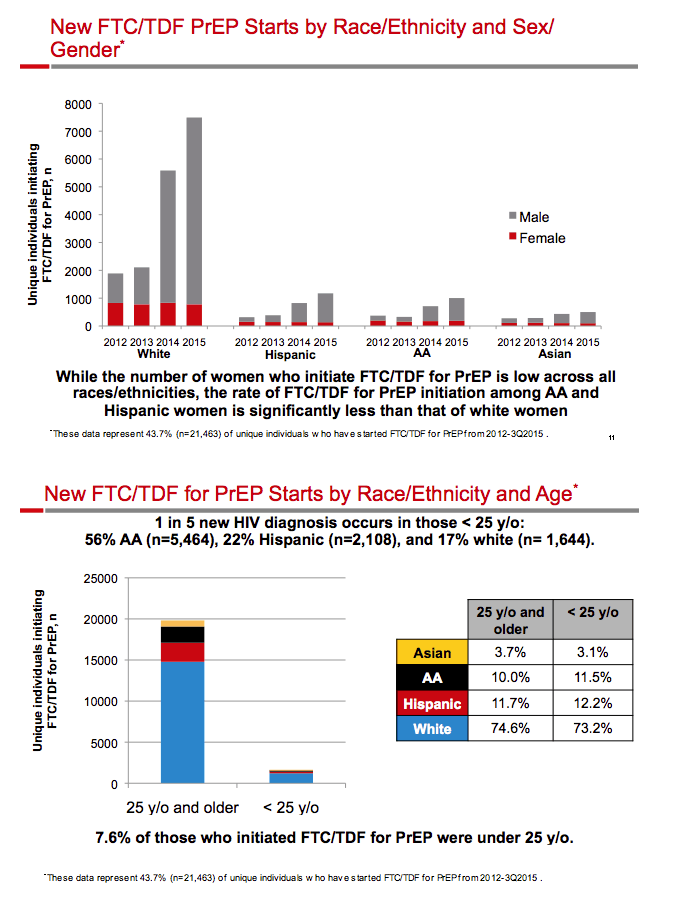
|
|
| |
| |
|
|
|